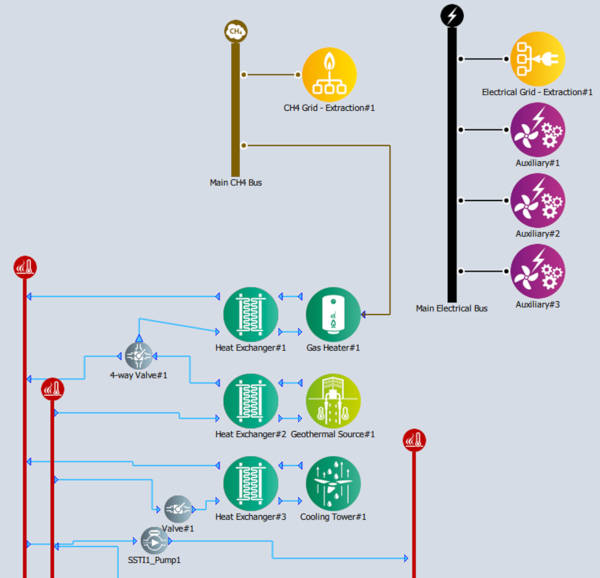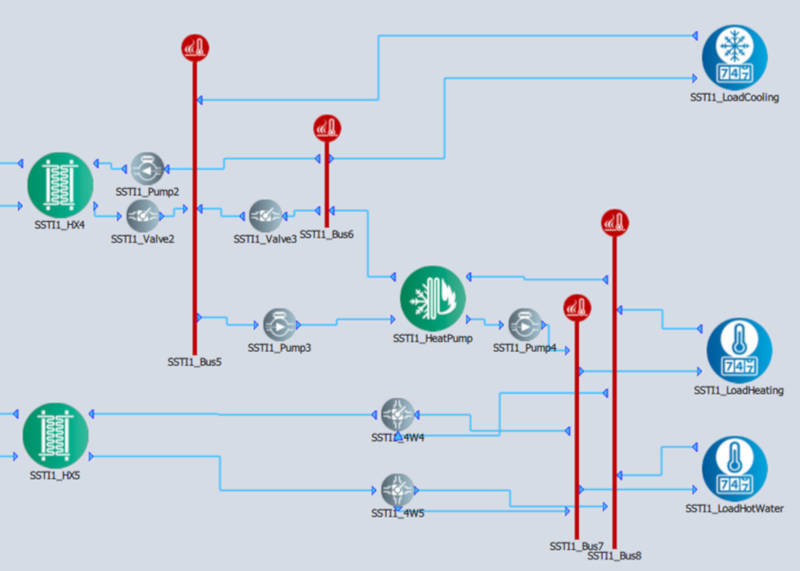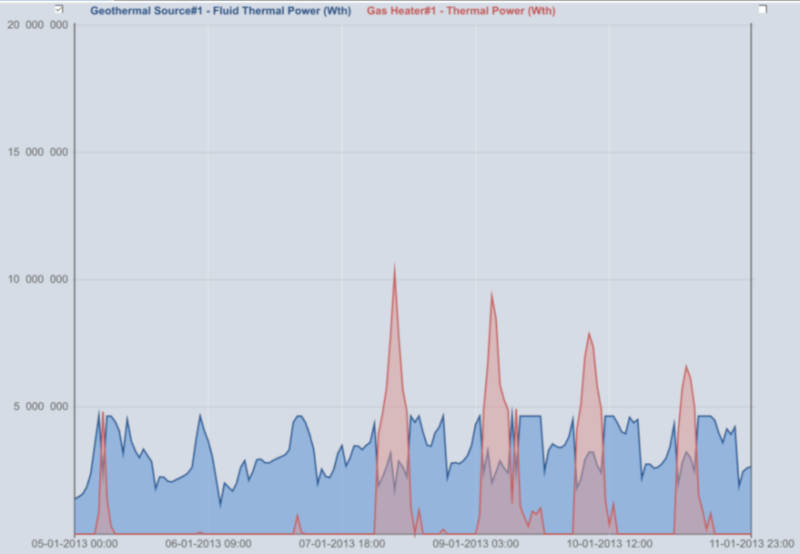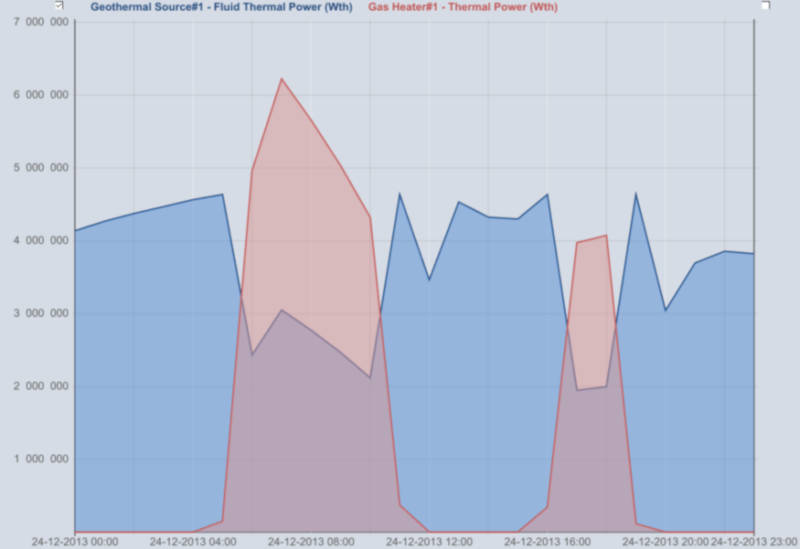Smart heating and cooling network
Study objectives
The objective of this study was to assist EPA Paris-Saclay in the design, construction and operation of the smart heating and cooling network. More specifically, software ODYSSEY was used to perform modelling, dynamic simulation and technical evaluation of the energy system. With the aim of determining the rate of New and Renewable Energies in the energy mix of the heating and cooling network customers.
This low temperature heating and cooling network is essentially fed by the geothermal energy source of the Albien’s groundwater and prefigures on several aspects the future of local energy systems (energies pooling, heat exchanges, smart management, high quality of services, excellent environmental performances, etc.).
Architecture examples

Centralized heating and cooling production

Decentralized heating and cooling production in a distribution substation
Examples of results

Use of geothermal energy - Use of gas boilers
Quantification of the rate of New and Renewable Energies (geothermal energy) in the energy supplied to final customers

Use of geothermal energy - Use of gas boilers
Use of geothermal energy and complement with gas boilers
Highlights
An essential role of modelling and dynamic simulation, which opens the field of possibilities:
- Use the modelling performed as support for testing management strategies (testing and evaluating new scenarios)
- Introduce and evaluate the technical and economic interest of thermal storage (heating and cooling) in order to increase the rate of New and Renewable Energies in distributed energy
- Use the modelling carried out for the feasibility study of connecting new customers to the heating and cooling network (need to strengthen production facilities, etc.)

